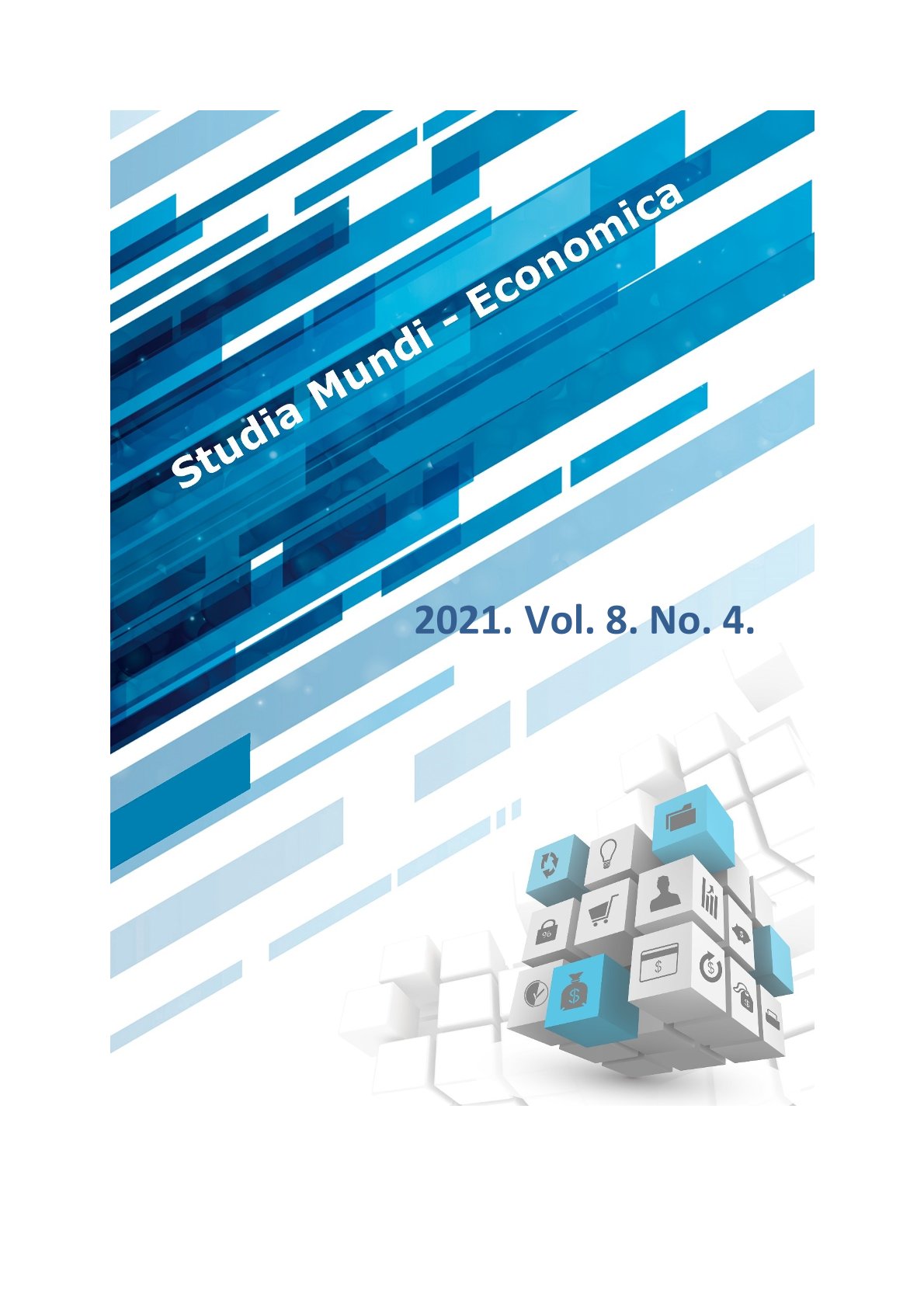Human resources requirements for reindustrialisation in Borsod-Abaúj-Zemplén county
DOI:
https://doi.org/10.18531/Studia.Mundi.2021.08.04.55-71Keywords:
Deindustrialization, Mining, Human ResourceAbstract
After World War II, Borsod-Abaúj-Zemplén county evolved into a major industrial centre due to coal mining, which was given priority in order to meet the industry’s growing demand for energy. Following the change of regime, the processes of deindustrialisation, which affected the various parts of the country very differently due to their diverse characteristics, had serious consequences in this county. Decline in mining had a major role in this. The county’s economic and social indicators still reflect this shock. The 2008 financial crisis shed doubts on the process of deindustrialisation. In its Communication for a European Industrial Renaissance (2014), the European Commission expressed its commitment to industrialisation, the modernisation of Europe's industrial base and the promotion of a competitive framework for EU industry. The success of reindustrialisation depends on a number of closely related factors. This article focuses on a single branch of the national economy: mining, and seeks to find the answer to whether a quality workforce and the necessary know-how are available in the region. We have prepared a SWOT analysis for the revitalisation of deep mines in Borsod-Abaúj-Zemplén county and we collected the most important statistical data about the deep mining. The history of mining is reviewed and the training needs are presented to assess the viability of revitalizing mining, with a focus on the specific features of human capital. Restarting mining in Borsod[1]Abaúj-Zemplén county is ideal because there are many unskilled or low-skilled unemployed people for whom traditional manual work is the only realistic alternative and the county still has the professional background in the science of mining.
References
/2009. (XI. 3.) KHEM rendelet a bányászatban műszaki biztonsági szempontból jelentős munkakörök betöltéséhez szükséges szakmai képesítésről és gyakorlatról https://net.jogtar.hu/jogszabaly?docid=a0900060.khe
Alderson, A. (1999): Explaining Deindustrialization: Globalization, Failure, or Success? American Sociological Review, Vol. 64. No. 5. pp. 701–721. https://doi.org/10.2307/2657372
Barta Gy. – Czirfusz M. – Kukely Gy. (2008): Re-industrialization in the world and in Hungary. European Spatial Research and Policy, Vol. 15. No. 2. pp. 5–26.
EC (2010): A Bizottság Közleménye. EURÓPA 2020. Az intelligens, fenntartható és inkluzív növekedés stratégiája. COM/2010/2020 végleges. Európai Bizottság, Brüsszel, https://eur-lex.
Európai Bizottság (2014): A Bizottság közleménye az Európai Parlamentnek, a Tanácsnak, az Európai Gazdasági és Szociális Bizottságnak és a Régiók Bizottságának az európai ipar ’reneszánszáért’” https://eur-lex.europa.eu/legal content/HU/TXT/HTML/?uri=CELEX:52014DC0014&from=EN
Hajdú D. (2021): The impact of population processes on adult training in Borsod-Abaúj Zemplén County between 2010 and 2019, Studia Mundi Economica. Vol 8. No 3. pp. 131-142. https://doi.org/10.18531/Studia.Mundi.2021.08.03.131-142
Killingsworth, M.R. (1983): Labor supply. New York: Cambridge University Press
Lehoczky A. (1975): A borsodi szénbányászat története. Miskolc, pp 30–50.
Lengyel I. – Szakálné Kanó I. – Vas Zs. (2017): Az újraiparosodás térbeli kérdőjelei Magyarországon. In: Lengyel I. (szerk.) 2017: Két évtizedes a regionális tudományi műhely Szegeden: 1997–2017. JATEPress, Szeged, pp. 261–293.
Lux G. (2013a): Az újraiparosítás lehetőségei: Fejlesztési együttműködés a periférián, Észak-magyarországi Stratégiai Füzetek, Miskolci Egyetem, Vol. 10. Np. 1. pp 4-13.
Lux G. (2013b): Az ipari parkok a területi versenyképességben: telephelyek vagy fejlesztési csomó-pontok? In: Kiss É. (szerk.): A hazai ipari parkok különböző dimenzióban. Dialóg Campus Kiadó, pp. 294–309.
Lux G. (2020): Ipar. In: Czirfusz, M (szerk.): Területi kihívások és területi politikák Magyarországon, 2010-2020. Budapest: Közgazdaság- és Regionális Tudományi Kutatóközpont Regionális Kutatások Intézete, pp. 63-68.
Molnár E. – Lengyel M. (2015): Újraiparosodás és útfüggőség: gondolatok a magyarországi ipar területi dinamikája kapcsán, Tér és Társadalom, Vol. 29. no. 4. pp. 42-59. https://doi.org/10.17649/tet.29.4.2726
Nagy B. – Udvari B. – Lengyel I. (2019): Újraiparosodás Kelet-Közép-Európában –újraéledő centrum–periféria munkamegosztás? Közgazdasági Szemle, Vol. 66. No. 2. pp. 163–184. https://doi.org/10.18414/ksz.2019.2.163
Rowthorn, R. – Ramaswamy, R. (1997): Deindustrialization–Its Causes and Implications. International Monetary Fund, September 1997. https://www.imf.org/EXTERNAL/PUBS/FT/ISSUES10/INDEX.HTM
Siskáné Szilasi B. – Szalontai L. – Vágó J. (2013): Észak-Magyarország felhagyott bányászati területeinek hasznosítási lehetőségei. Észak-magyarországi Stratégiai Füzetek, Vol. 10. No. 1. pp. 26-37.
Törő Gy. (2015): Tájékoztató a B-A-Z megyei szénbányászat jelenlegi és jövőbeli helyzetéről, http://www.baz.hu/content/cont_55474250af2990.51244094/1504_14_taj_banyaszat.pdf
Varga M. (2016): T/10377. számú törvényjavaslat Magyarország 2017. évi központi költségvetéséről. Fejezeti indoklások. Budapest, 2016. május http://www.parlament.hu/irom40/10377/I_fejezeti_kotet.pdf
Világgazdaság (2017, November 8): Csomag válthatja ki a korkedvezményes nyugdíjat. https://www.vg.hu/gazdasag/csomag-valthatja-ki-korkedvezmenyes-nyugdijat-672183
Downloads
Published
Issue
Section
License
Copyright (c) 2021 Zsuzsanna Dabasi-Halász, Katalin Lipták, Andrea Sáfrányné Gubik, Beatrix Varga

This work is licensed under a Creative Commons Attribution-NonCommercial-NoDerivatives 4.0 International License.
A folyóirat Open Access (Gold). Cikkeire a Creative Commons 4.0 standard licenc alábbi típusa vonatkozik: CC-BY-NC-ND-4.0. Ennek értelmében a mű szabadon másolható, terjeszthető, bemutatható és előadható, azonban nem használható fel kereskedelmi célokra (NC), továbbá nem módosítható és nem készíthető belőle átdolgozás, származékos mű (ND). A licenc alapján a szerző vagy a jogosult által meghatározott módon fel kell tüntetni a szerző nevét és a szerzői mű címét (BY).






